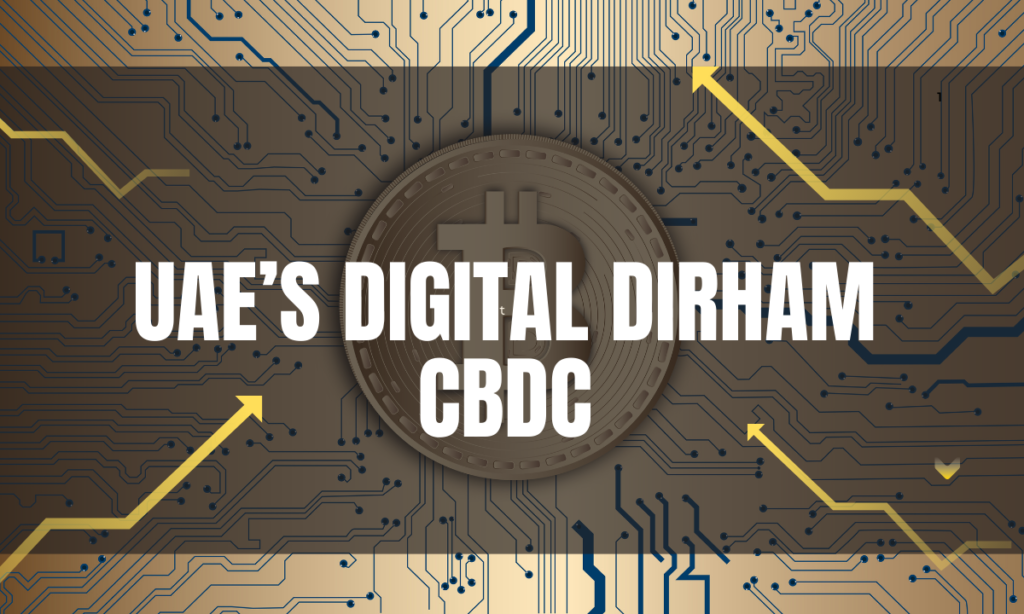UAE’s Digital Dirham CBDC: A Game-Changer for the Economy

The UAE plans to launch its Central Bank Digital Currency (CBDC) named the Digital Dirham before the end of 2025. The United Arab Emirates joins other premier nations to adopt digital currencies because it plans to launch the Digital Dirham before 2025 concludes. What is the Digital Dirham? Under the authority of the Central Bank of UAE (CBUAE), the Digital Dirham operates as the blockchain-based edition of the UAE national currency AED. CBDC differs from Bitcoin along Ethereum because it receives government backing and manages legal tender value and stability. Key Features of the Digital Dirham: The UAE’s CBDC will enable instant, secure transactions with smart contract capabilities. Retail & Wholesale Use: Available for everyday transactions, peer-to-peer payments, and business settlements. Smart Contract Integration: Enables automated, programmable payments (e.g., salaries, rent, subscriptions). Instant Cross-Border Transactions: Faster and cheaper remittances compared to traditional banking. High Security & Tokenization: Reduces fraud risks with advanced encryption. Multi-Party Transactions: Supports complex financial operations like trade finance. Why is the UAE Launching a CBDC? Both Dubai and Abu Dhabi lead international financial technologies through their policy, which enables cryptocurrency builders to operate within their territories. Through its cashless payment system and increased efficiency, the Digital Dirham functions as an instrument to reach national strategic economic goals. The explicitly government-supported digital money functions as a safe money storehouse instead of Tether (USDT) and prevents cryptocurrency hazards for investors seeking control over their currency. Instant payment capabilities in the CBDC enhance the UAE’s position as a leading international trading center by simplifying cross-border financial transfers. As per the regulated framework of the Digital Dirham, authorities can conduct oversight that minimizes exposure to financial crimes, including money laundering and fraud. UAE’s CBDC vs. Private Stablecoins In June 2024, the UAE introduced a regulatory framework for stablecoins, paving the way for dirham-backed tokens. Tether (USDT) even announced plans to launch an AEDT (AED-pegged stablecoin). However, the Digital Dirham differs in key ways: Issued by the central bank, not a private company. Must be accepted as payment, unlike optional stablecoins. Helps the central bank manage inflation and liquidity more effectively. Challenges & Risks The Digital Dirham delivers multiple beneficial features to users, yet multiple vital operational issues interfere with its deployment. Complete traceability in the CBDC platform poses privacy problems because all transactions stay visible to authorities permanently, which makes privacy-conscious users fearful of using the system. The centralization of the system exposes security risks because cybercriminals have a clear target on the infrastructure, and technical failures could damage public trust. User adoption remains challenging for CBDC due to citizens who dislike centralized power and cryptocurrency freedom, together with the high costs businesses must invest to adopt new payment systems. Mainstream adoption of the Digital Dirham may be delayed by multiple factors, even though it offers innovative capabilities. Final Thoughts: A Digital Economy Leap The Digital Dirham represents an essential development for the financial systems of the UAE. The year 2025 will introduce an instantaneous payment system that provides security and programmability to reinvent financial operations of both individuals and corporate entities. For investors and fintech innovators, this presents new opportunities in blockchain, DeFi, and digital payment solutions. The UAE’s move could also inspire other Gulf nations to accelerate their own CBDC plans.

